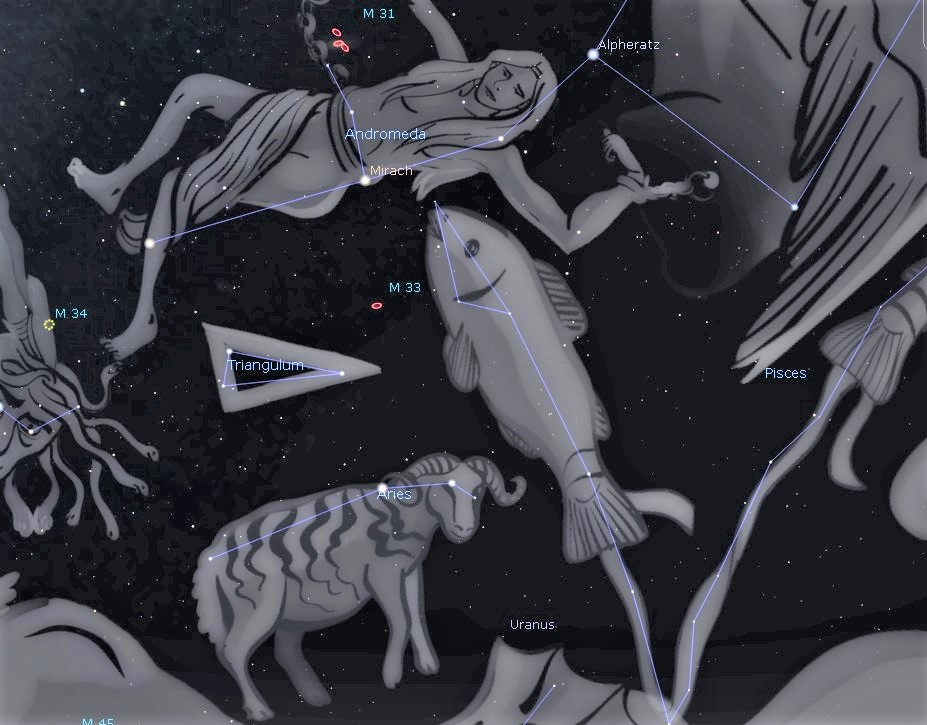This Week’s Sky at a Glance, 2021 September 25 – October 2
~by Curt Nason
Small constellations tend to get overlooked unless, like Delphinus the Dolphin, they have fairly bright stars or an eye-catching pattern. Aries the Ram and cleverly named Triangulum aren’t quite as pretty as Delphinus but they do get noticed. Okay, Triangulum isn’t pretty but it is acute, situated below Andromeda in mid-evening. Below it is brighter Aries, which resembles a somewhat squashed triangle.
In mythology, the god Hermes sent a flying, golden ram to rescue a prince who was being sacrificed to end a famine. The prince showed his gratitude by slaughtering the ram and giving its fleece to a man in exchange for his daughter’s hand in marriage. The Golden Fleece later became the quest of Jason and the Argonauts. Over 2000 years ago the Sun was in Aries on the first day of spring, and the vernal equinox is still called the First Point of Aries despite having moved into the constellation Pisces long ago.
Triangulum is not associated with an exciting tale from mythology but at times it had been regarded as a tribute to both the Nile Delta and the island of Sicily. I use the tip of the triangle as a reference for locating the Triangulum Galaxy, also called M33. It is almost halfway and a tad to the right of a line from the tip to orange Mirach in Andromeda. Smaller and slightly more distant than the nearby Andromeda Galaxy (M31), this face-on spiral galaxy is dim but attainable with binoculars in a reasonably dark sky.
This Week in the Solar System
Saturday’s sunrise in Moncton is at 7:10 am and sunset will occur at 7:10 pm, giving 12 hours of daylight (7:15 am and 7:15 pm in Saint John). Next Saturday the Sun will rise at 7:19 am and set at 6:56 pm, giving 11 hours, 37 minutes of daylight (7:23 am and 7:02 pm in Saint John).
The Moon is at third quarter on Tuesday evening, rising at 11:15 pm and setting around 3 pm Wednesday. Venus is the brightest object in the early evening sky, but once it sets Jupiter reigns until moonrise. On Tuesday evening, between 9:40 and 10 pm, telescope and binocular users might see Jupiter’s moon Europa disappear behind the planet (9:50) and moon Io emerge from Jupiter’s shadow (9:53) on the opposite side. Moons Callisto and Ganymede are also seen on opposite sides, with Ganymede being closer to Jupiter. After that, move westward for a view of Saturn’s rings and its moon Titan. This week Mercury begins a two-week plunge toward the Sun.
Questions? Contact Curt Nason.

